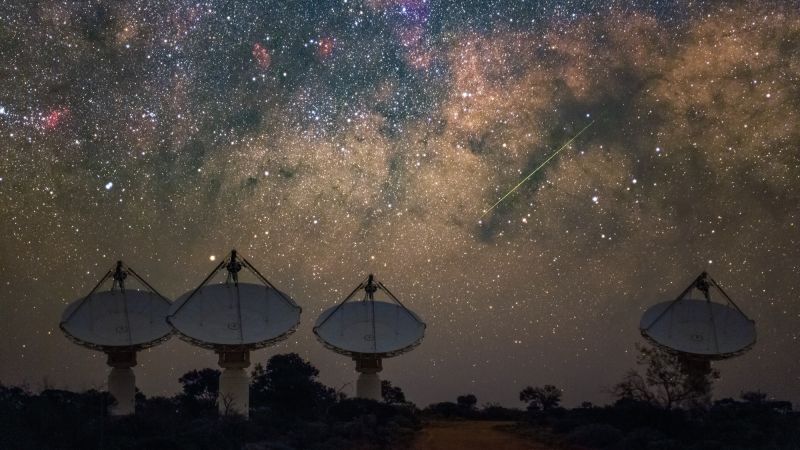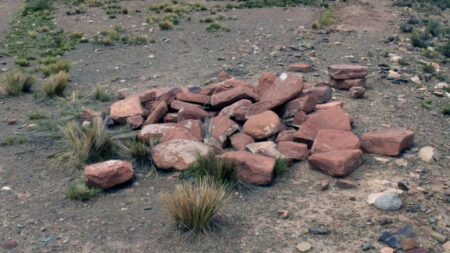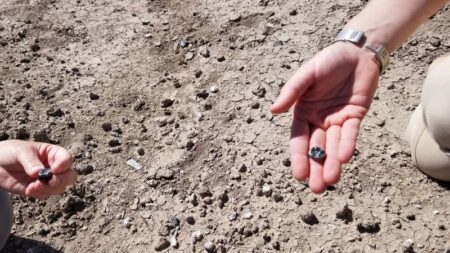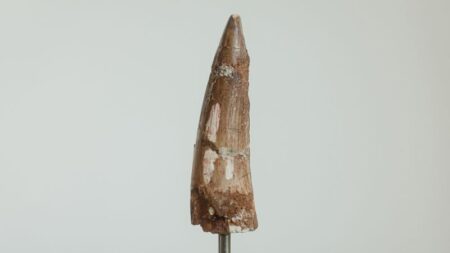In a remarkable discovery in mid-June, astronomers based in Australia detected a powerful and anomalous radio signal that briefly outshone all celestial bodies within Earth’s vicinity. This exciting event has ignited a flurry of curiosity and research, particularly in the context of the increasing volume of debris encircling our planet. Researchers initially believed they were witnessing an unprecedented astronomical phenomenon, a sentiment echoed by Clancy James, an associate professor at Curtin University’s Curtin Institute of Radio Astronomy in Western Australia, who stated, “We got all excited, thinking we had discovered an unknown object in the vicinity of the Earth.”
The data that caught the researchers’ attention originated from the Australian Square Kilometre Array Pathfinder (ASKAP) radio telescope, situated in Wajarri Yamaji Country. This facility comprises an array of 36 high-tech antennas, each towering three stories high. The research team typically analyzes signals from distant galaxies, known as “fast radio bursts,” which are high-energy explosions that last approximately one millisecond. James elaborated on the mystery surrounding these bursts, stating, “We don’t know what’s producing them, and we’re trying to find out because they really challenge known physics.” Current theories suggest these bursts could be emitted from magnetars, which are dense remnants of dead stars with extraordinarily powerful magnetic fields.
However, as researchers delved deeper into the origins of this signal, they realized its source was uncharacteristically close to Earth – about 4,500 kilometers (approximately 2,800 miles) away. This proximity ruled out the possibility of it being a distant astronomical object. The investigation led James and his colleagues to identify the signal’s origin from an obsolete satellite known as Relay 2. Launched by NASA in 1964, Relay 2 was designed as an experimental communications satellite but quickly fell out of operation, becoming space debris just three years after its launch.
As the researchers pondered the implications of a once-defunct satellite suddenly emitting signals decades later, they published their findings in The Astrophysical Journal Letters. They inferred the initially observed blurry image from the telescope was due to the signal’s nearness to the antenna, which resulted in a curved wavefront instead of the expected flat one typical of distant sources. To refine their analysis, the team isolated the signals from the inner antennas, which are spread over a significant expanse of the Australian outback, allowing them to concentrate on the clearer signals arriving from closer sources.
Upon closer examination, they found that the signal had become increasingly luminous as they zoomed in, becoming markedly brighter than the other radio data detected, by a factor of thousands. This intensity led the researchers to hypothesize two potential causes for the signal: one involving an electrostatic discharge and the other attributed to a minor impact from a micrometeorite.
James explained electrostatic discharges as the accumulation of electrons on the metallic surface of a satellite, building up until a sudden release occurred, resembling the small static shocks one might experience after shuffling across carpet. Meanwhile, the micrometeorite impact, although much less likely, could create a burst of radio waves if a tiny space rock hit the satellite while traveling at incredibly high speeds.
James further emphasized that while these discharges usually pose no threat to humans, they can be detrimental to spacecraft. This discovery is crucial, as it reveals that ground-based radio observations may detect unusual phenomena in older satellites, signaling a need for more effective and economical methods of monitoring such events.
Critically, the findings underscore a growing concern regarding space debris, given that over 22,000 satellites have been launched into orbit since the inception of space exploration, with many no longer operational. Notably, James articulated the complications posed by satellite transmissions, suggesting that discerning between satellite signals and genuine astrophysical phenomena will become increasingly complex as satellite launches proliferate.
The implications of this research stretch beyond a singular event, as James’ observations have incited further scrutiny of satellite activity in correlation with cosmic phenomena. Experts such as James Cordes from Cornell University and Ralph Spencer from the University of Manchester have commended the methodical analyses conducted in this study, with Spencer noting that the results indicate such radio bursts may be more prevalent than previously recognized. The situation advocates for new experimental methodologies, such as the Square Kilometre Array Low-Frequency Array (SKA-Low), which is currently under construction in Australia, promising to shed light on these intriguing cosmic encounters in the future. The complex dynamics between artificial satellites and astronomical signals entail a critical reevaluation of observational strategies within the field of astronomy.












